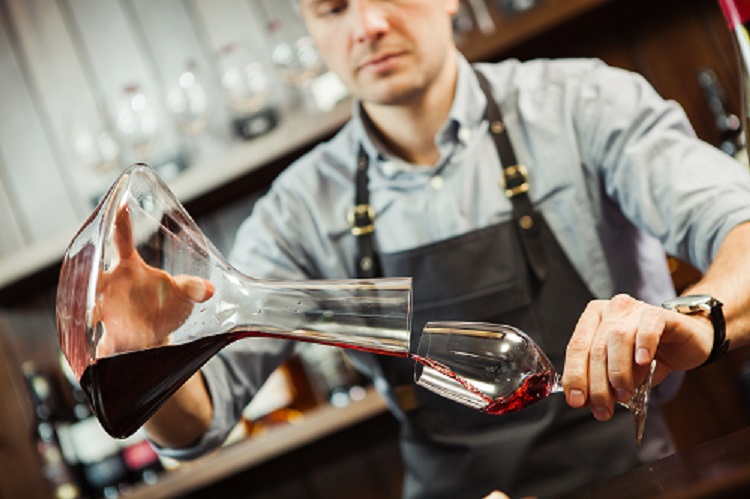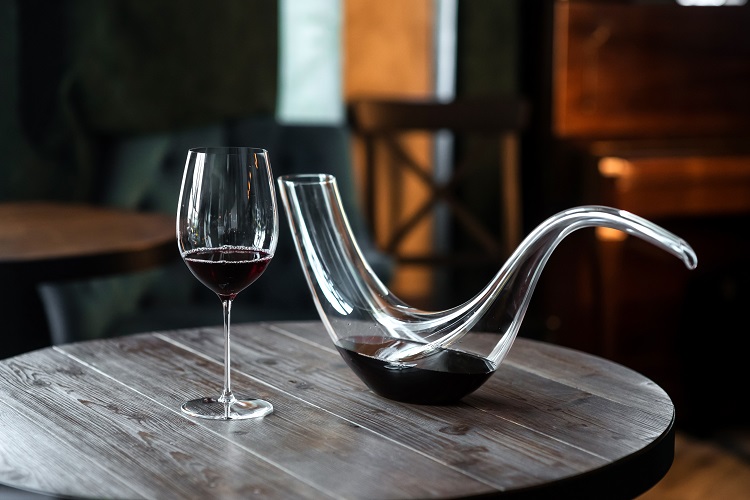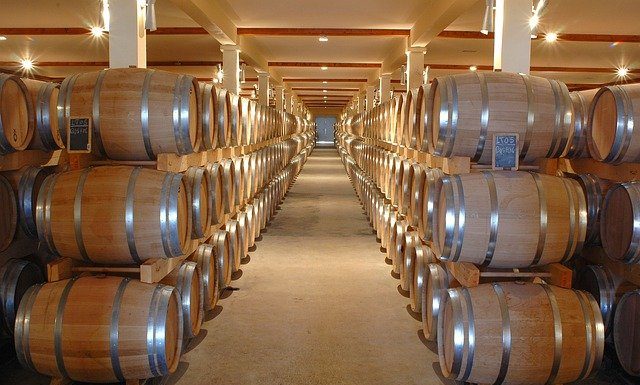We saw what a decanter was used for in our previous article. So we know that it can have several purposes: to aerate, to decant and to look nice! Now we will try to give you some tips on how to choose the right decanter and understand which wines to decant.
The different types/shapes of decanters
To choose your decanter carefully, think about your drinking habits, and choose it according to the wines you prefer to drink (young, red and white, to be aerated or old, to be decanted). Because your choice will be determined by a question: which wines do you want to decant? But there are other more “practical” characteristics to take into account.
- Size – A decanter takes up space and can be difficult to store.
- The shape – The width of the base is also to be taken into consideration: the wider it is, the more the wine will be in contact with the air. Very good. But if it is too wide, you will have trouble serving the last glasses.
- The material – You are a little clumsy? Maybe you should prefer glass to crystal. It is more a question of price than of material strength!
- Aesthetics – If you choose a carafe only for the service, don’t forget that you will have to wash it … You’ll probably think twice before using your beautiful sinuous carafe if you have to spend 2 hours washing it!

Carafe for young wines
For young and natural wines. More and more wines are produced to be consumed young. They will therefore need aeration to be tasted and to reveal all their aromas. In this case, the decanter used will be of “classic” shape, i.e. very wide at the bottom, with a flared neck. As we have seen, aeration consists of increasing the surface area of exchange between the oxygen and the wine. This aeration process is also very interesting for natural wines. Decanting allows them to “open” and evacuate the gas present and characteristic of these wines. The waiting time will depend on the wine served. Be careful however not to let the wine wait too long in the carafe, as there is no going back.
Decanter for old wines
Here, the intention will be different: it will not be a question of aerating the wine, on the contrary, because too much oxygenation can spoil an old wine. It will be a question of decanting the wine, meaning pouring it delicately into the decanter and letting it rest so that any deposits that may have accumulated in the bottle over time will settle at the bottom of the carafe. This time, it will be necessary to use a decanter with a narrower top, called a “duck” decanter (because of… its duck shape). And it will be crucial to proceed with precaution. Indeed, oxygen could be fatal to the wine, so you’ll have to operate at the last moment and place a stopper or at least cover the carafe to prevent too much air from coming into contact with the wine.

Red wine decanter
Choosing a decanter for red wines means choosing the most common decanter. Whether it is used for serving, aerating or decanting. Because it is above all red wines that are decanted, especially young red wines.
White wine decanter
Generally speaking, we think about decanting red wines but rarely white wines. However, we have seen that white wines benefit just as much from aeration as red wines. It is better to decant a white wine if it is young and rather full-bodied (a great white Burgundy wine for example). Decanting will eliminate some residual bad smells (such as sulfur) and will do them the greatest good. If the carafe is narrow enough to fit in an ice bucket, you’ll have won it all! When choosing a white wine decanter, you will see that some of them have been specially designed for white wine. They are equipped with a cooling rod or made to hold ice cubes.
Champagne decanter
At first, one might think that this question does not even deserve to be asked! And yet, champagne is above all wine! As for other wines, it is better to decant young champagnes for the same reasons of releasing the aromas and erasing the oxidative character present in some champagnes. Here, the difference lies in the fact that we must be careful not to lose the bubbles that make up the charm of champagne. Delicacy is the key word in decanting champagne. Here you will choose to use an elongated decanter (to keep it cool) and equipped with a stopper to let the air out but without losing effervescence. Also make sure to use the appropriate glasses so you don’t double the effect of the decanter. That said, a large number of amateurs and professionals avoid decanting champagne. For them, this represents an attack on the work of the winemaker…
Spirits decanter
Not all spirits require aeration. The use of the decanter will be almost exclusively aesthetic. Indeed, you can appreciate the more or less amber color of a whisky through a designed crystal decanter for example. Be careful however not to leave the alcohol too long so as not to let its gustatory qualities escape. Decanters for spirits, especially whisky, are most of the time made of chiselled crystal. They are real decorative objects.
What is the difference between a crystal decanter and a glass decanter?
The material of the decanter has no effect on the wine! The differences lie in price and aesthetics. Indeed, a crystal decanter will certainly have more effect on the table than a glass decanter from Ikea! But it will also surely be more expensive. Both materials are quite strong but if you are clumsy, maybe a glass decanter from Ikea will be enough!
Conclusion
Choosing the right decanter is above all a matter of knowing your consumption habits. Because the characteristics of the carafes are mainly defined by the use that one makes of it. So ask yourself this question first: which wines do I drink? to know which wines to decant. But it’s also a choice determined by the aesthetics! Decanters can be made of glass or crystal. And it is especially their shape that will differ according to their use. As you will have understood, aeration is appropriate for all young wines. But taste before decanting. If the wine is closed, it will benefit from aeration.
Of course, if you want to be sure to aerate your wine properly, and instantly, you can always choose to use your connected wine aerator, by Aveine. Moreover, it’s small enough to be stored anywhere, and easy to clean!
In our next article, we will see how to use a decanter properly. Because now that we know what it is used for and how to choose it, we will have to use it!








